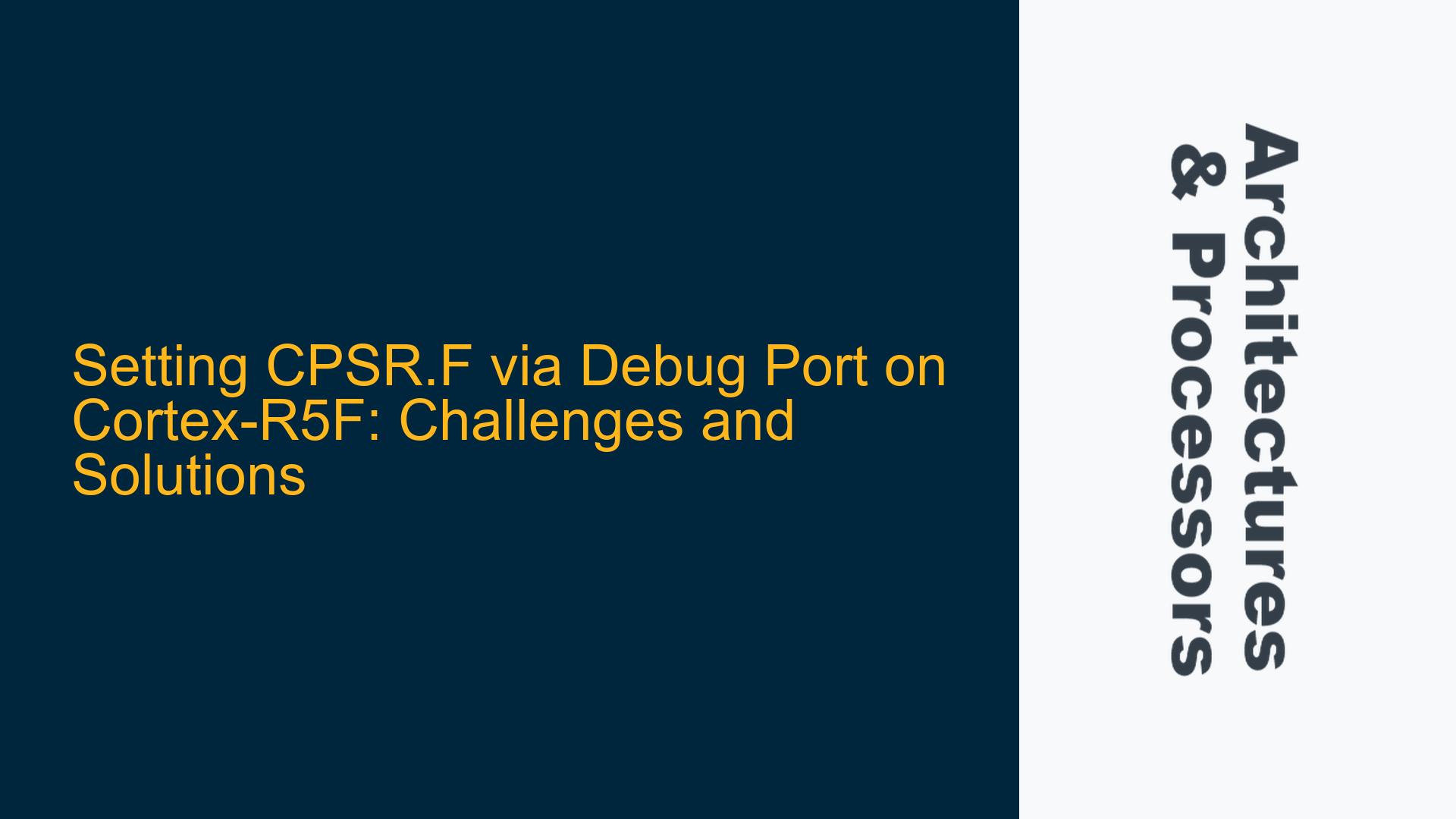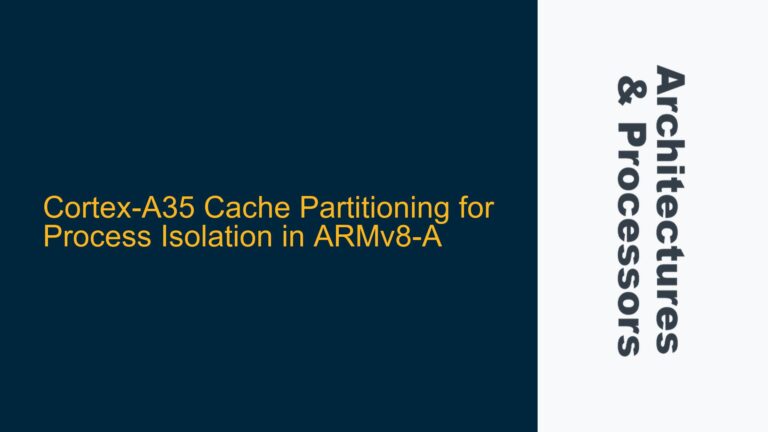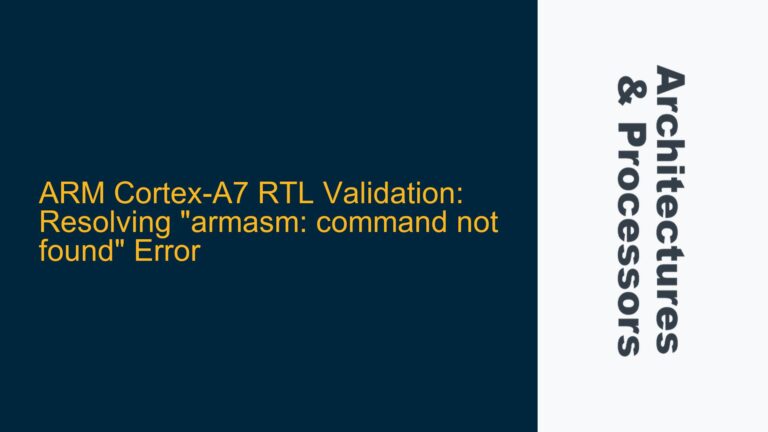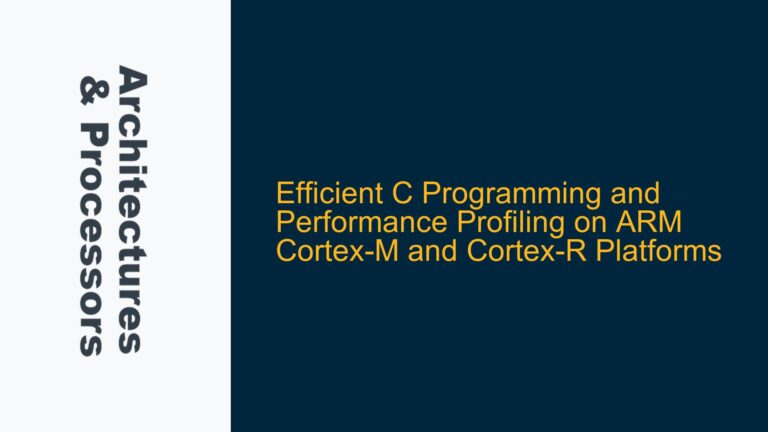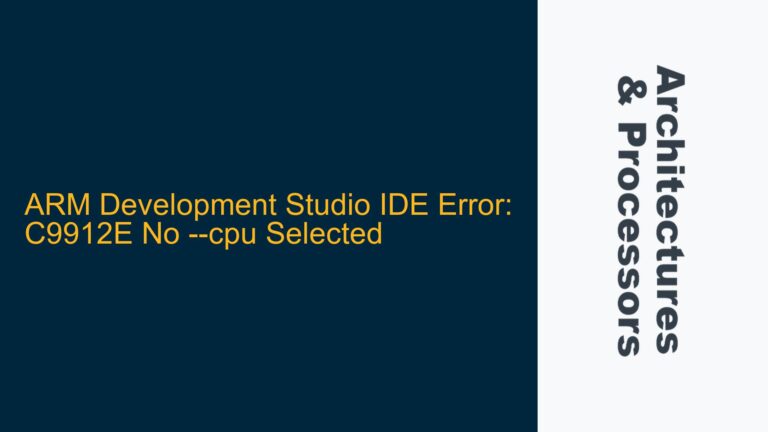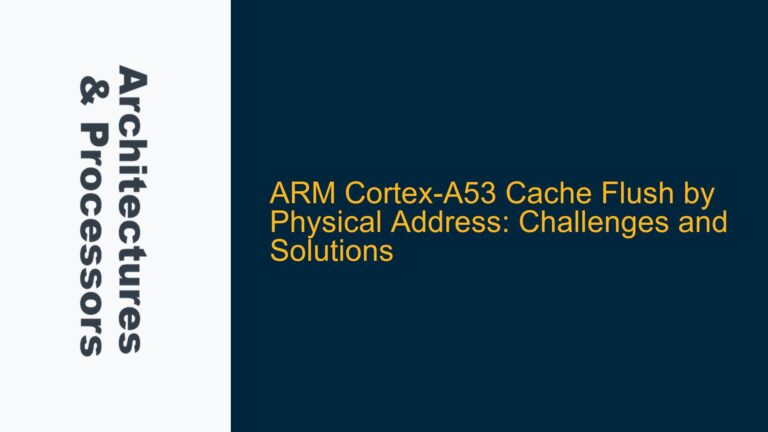CPSR.F Bit Manipulation Constraints in Cortex-R5F
The CPSR (Current Program Status Register) in ARM architectures is a critical register that holds the processor’s current state, including condition flags, interrupt disable bits, and mode bits. Among these, the CPSR.F bit is specifically responsible for disabling Fast Interrupt Requests (FIQs). In the Cortex-R5F processor, the CPSR.F bit is typically set by hardware during an FIQ or reset and can only be cleared by software running in privileged modes. However, setting the CPSR.F bit programmatically is restricted due to architectural constraints, as it could lead to undefined behavior or security vulnerabilities if misused.
The primary challenge arises when testing software that is designed to clear the CPSR.F bit. To validate such software, it is necessary to set the CPSR.F bit artificially, which is not possible through standard software means. This limitation necessitates the use of alternative methods, such as leveraging the debug interface (e.g., JTAG) to manipulate the CPSR.F bit. However, the Technical Reference Manual (TRM) for the Cortex-R5F does not explicitly clarify whether the CPSR.F bit can be set via the debug port, leading to ambiguity and potential roadblocks in testing workflows.
The Cortex-R5F processor, being part of the Cortex-R series, is designed for real-time applications where deterministic behavior is paramount. This design philosophy extends to its interrupt handling mechanisms, including the FIQ system. The CPSR.F bit plays a crucial role in ensuring that FIQs are handled predictably, and its manipulation must be carefully controlled to avoid disrupting the system’s real-time guarantees. This architectural rigor complicates efforts to set the CPSR.F bit for testing purposes, as the processor’s design inherently restricts such operations.
Debug Port Limitations and TrustZone Implications
The ability to set the CPSR.F bit via the debug port is constrained by several factors, including the processor’s security features and the specific implementation of the debug interface. In the Cortex-R5F, the debug port provides extensive access to the processor’s internal state, including registers and memory. However, this access is not unlimited, and certain operations, such as setting the CPSR.F bit, may be restricted to maintain system integrity.
One key consideration is the use of TrustZone technology, which is available in some ARM processors, such as the Cortex-A9. TrustZone introduces a secure and non-secure world, with the Monitor mode acting as a bridge between the two. In systems with TrustZone, the CPSR.F bit can be set persistently in Monitor mode, providing a mechanism to manipulate the bit for testing purposes. However, the Cortex-R5F does not implement TrustZone, eliminating this option and further complicating efforts to set the CPSR.F bit.
Another factor is the use of FIQs as Non-Maskable Interrupts (NMIs) in certain configurations. When FIQs are configured as NMIs, the CPSR.F bit can only be cleared, not set. Attempting to set the CPSR.F bit via the debug port in such configurations will result in the bit reverting to 0 once the CPU resumes execution. This behavior is consistent with the processor’s design to ensure that NMIs cannot be masked, preserving their critical role in handling high-priority events.
The debug port’s limitations are further compounded by the lack of explicit documentation in the Cortex-R5F TRM regarding CPSR.F bit manipulation. This omission creates uncertainty about whether the debug port can be used to set the CPSR.F bit and, if so, under what conditions. Without clear guidance, developers must rely on empirical testing and experimentation to determine the feasibility of using the debug port for this purpose.
Leveraging Reset and Debugger-Specific Features for Testing
Given the constraints on setting the CPSR.F bit via the debug port, alternative approaches must be employed to test software that clears the bit. One such approach involves leveraging the processor’s reset behavior. Upon reset, the CPSR.F bit is set by default, providing a known initial state for testing. By resetting the processor and verifying that the CPSR.F bit is set, developers can then execute their software to clear the bit and confirm that the operation is performed correctly.
This method, while effective, has limitations. It requires a full processor reset, which may not be practical in all testing scenarios, especially those involving complex system states or long initialization sequences. Additionally, resetting the processor may disrupt other aspects of the system under test, complicating the interpretation of results.
Another potential solution involves using debugger-specific features or backdoor mechanisms that provide enhanced access to the processor’s internal state. Some debuggers offer advanced capabilities that go beyond standard JTAG functionality, allowing developers to manipulate registers and memory in ways that are not possible through conventional means. These features may include the ability to set the CPSR.F bit directly, bypassing the architectural restrictions that prevent software from doing so.
However, the availability and functionality of such debugger-specific features vary widely depending on the toolchain and hardware platform. Developers must carefully evaluate their debugger’s capabilities and consult the relevant documentation to determine whether it supports the required operations. In some cases, custom scripts or extensions may be necessary to achieve the desired functionality.
In conclusion, while setting the CPSR.F bit via the debug port on the Cortex-R5F presents significant challenges, alternative methods such as leveraging reset behavior and debugger-specific features can provide viable solutions for testing software that clears the bit. Developers must carefully consider the constraints and limitations of their specific hardware and toolchain to devise an effective testing strategy. By understanding the underlying architectural principles and exploring the available options, it is possible to overcome these challenges and ensure the reliability of software that interacts with the CPSR.F bit.
